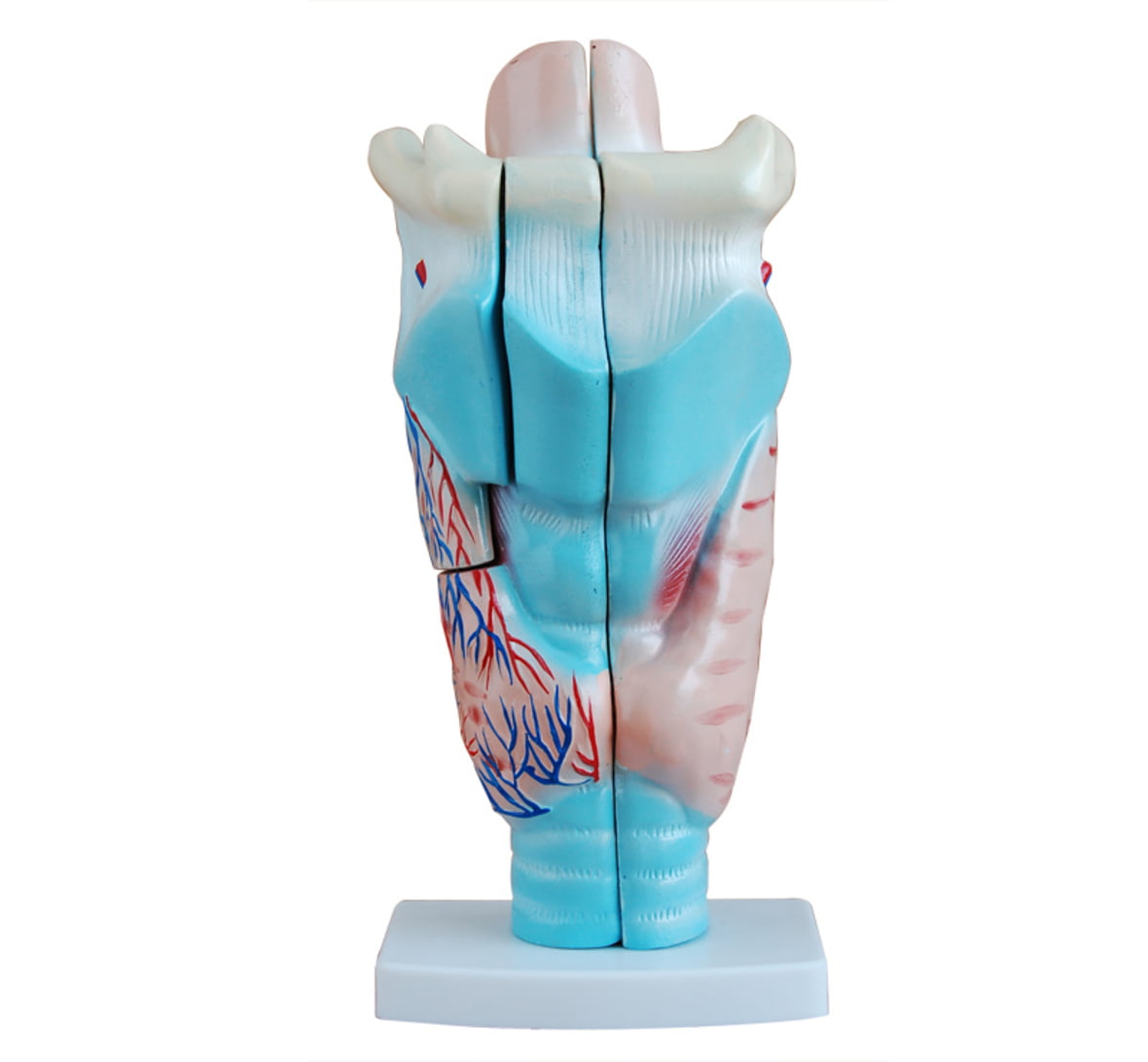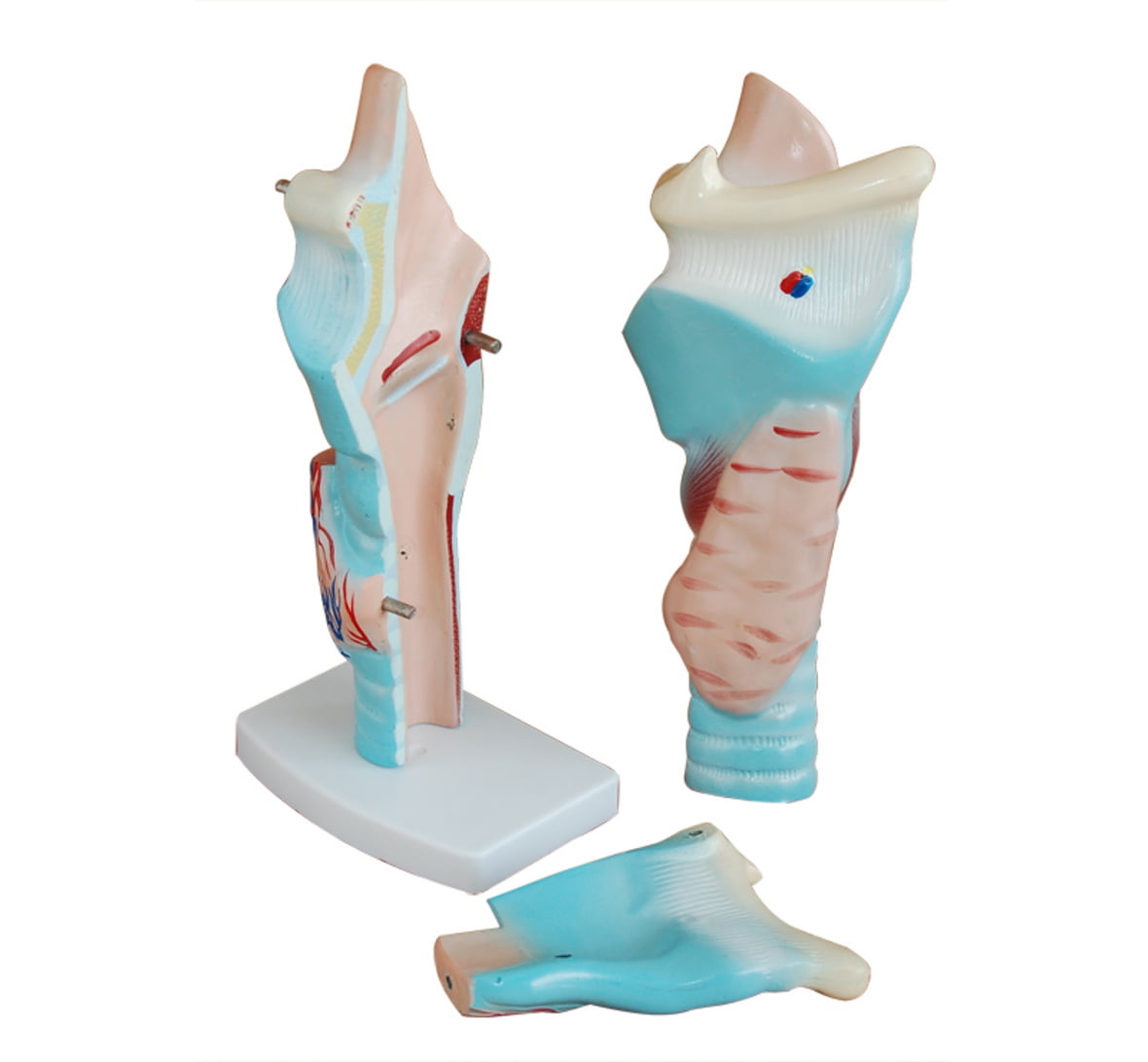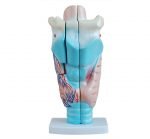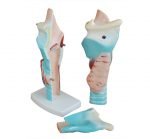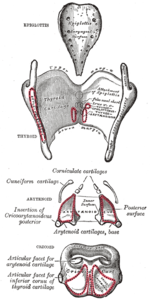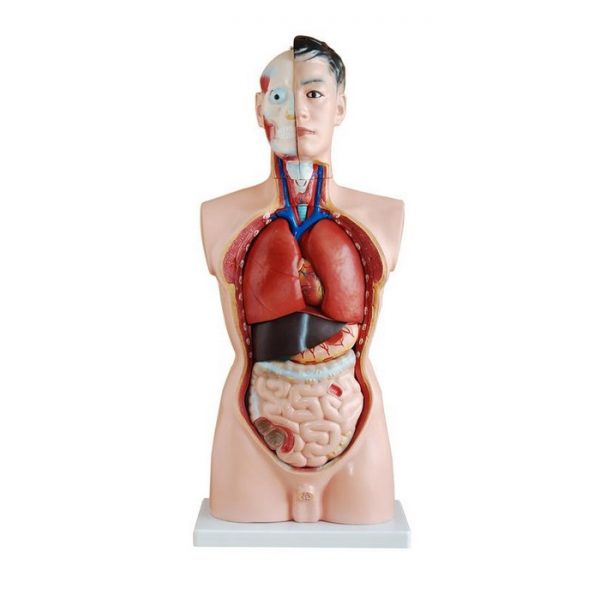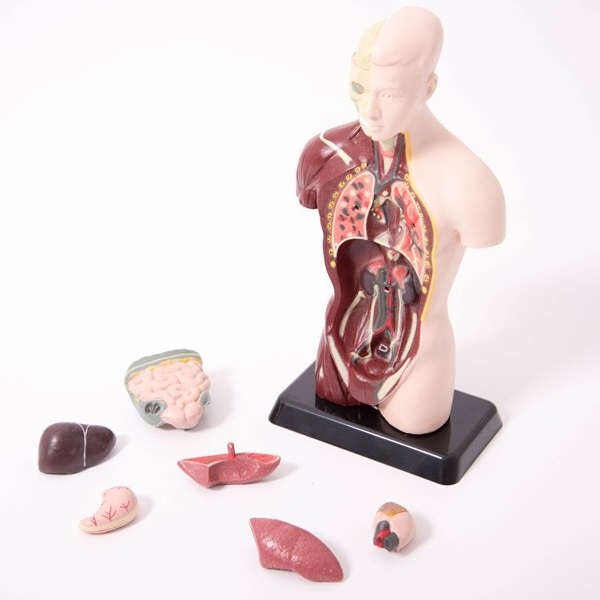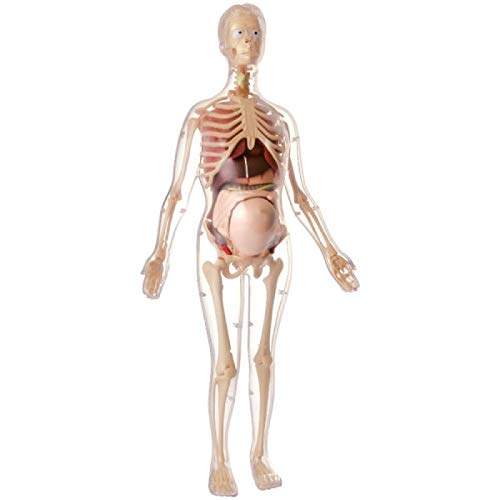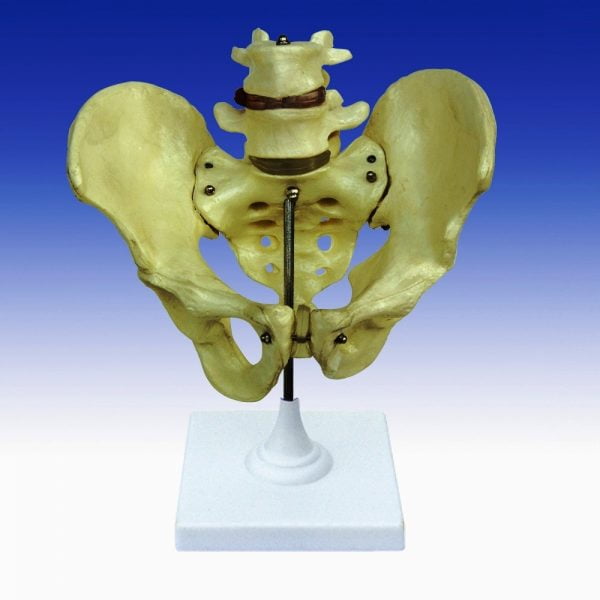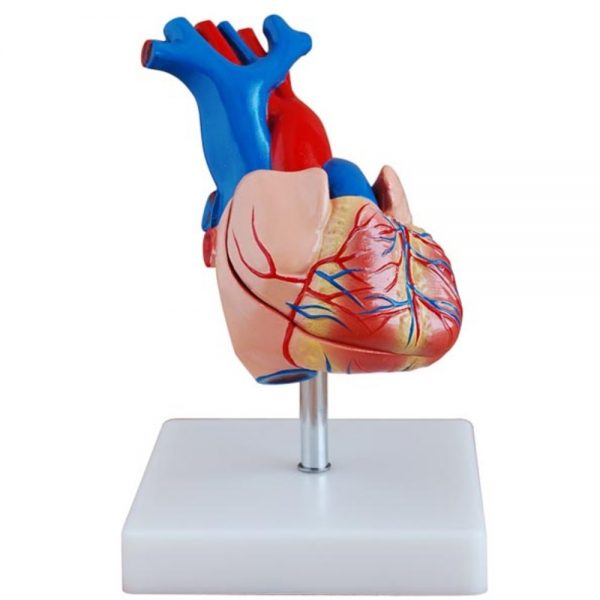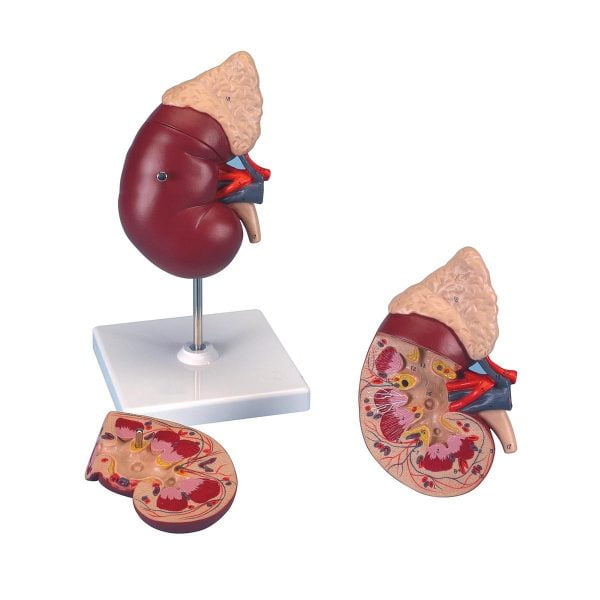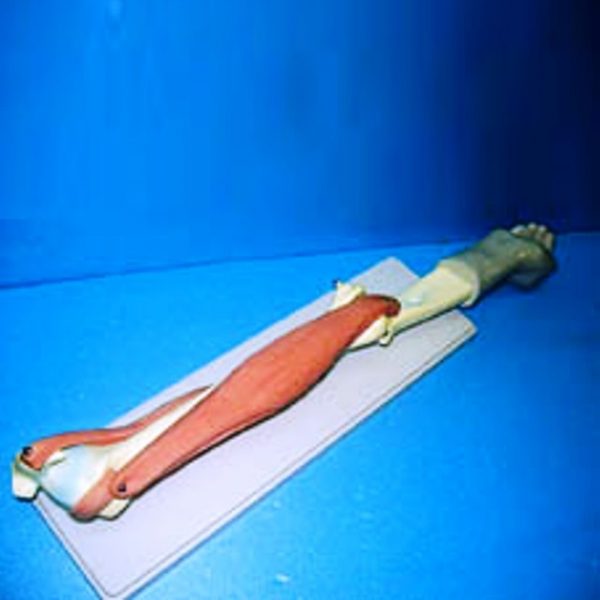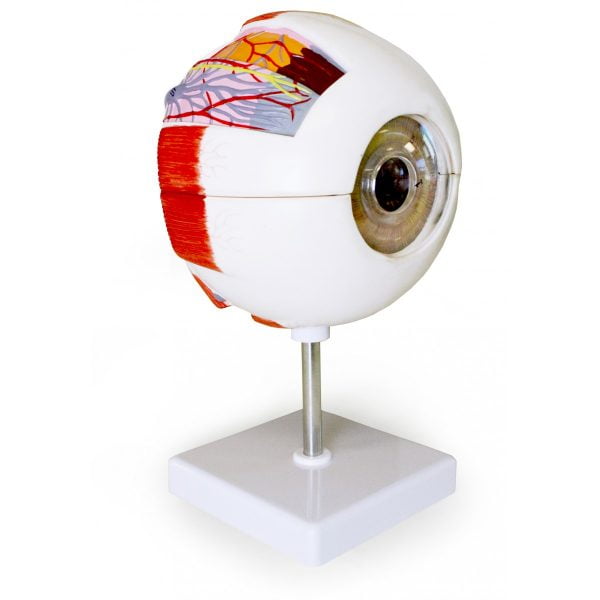Human Larynx Model
Human Larynx Model
A functional model that demonstrates movements of the epiglottis and cartilages in the voice box. It helps the students to require and understanding of the morphology and structure of the respiratory tract and phonetic organ. Dissectible into 3 parts, 3 times enlarged.
Size: 11.5x11x24CM.
Material: PVC
Dissectible into 3 parts.
Larynx
Human Larynx Model
The larynx , commonly called the voice box, is an organ in the top of the neck involved in breathing, producing sound and protecting the trachea against food aspiration. The larynx houses the vocal folds, and manipulates pitch and volume, which is essential for phonation. It is situated just below where the tract of the pharynx splits into the trachea and the esophagus. The word larynx (plural larynges) comes from a similar Ancient Greek word (λάρυγξ lárynx).
Human Larynx Model
Structure
The triangle-shaped larynx consists largely of cartilages that are attached to one another, and to surrounding structures, by muscles or by fibrous and elastic tissue components. It is lined by a ciliated mucous membrane. The cavity of the larynx extends from its triangle-shaped inlet, the epiglottis, to the circular outlet at the lower border of the cricoid cartilage, where it is continuous with the lumen of the trachea. The mucous membrane lining the larynx forms two pairs of lateral folds that jut inward into its cavity.
Location
In adult humans, the larynx is found in the anterior neck at the level of the C3–C6 vertebrae. It connects the inferior part of the pharynx (hypopharynx) with the trachea. The laryngeal skeleton consists of six cartilages: three single (epiglottic, thyroid and cricoid) and three paired (arytenoid, corniculate, and cuneiform).
Cartilages
There are six cartilages, three unpaired and three paired, that support the mammalian larynx and form its skeleton.
Unpaired cartilages:
- Thyroid cartilage: This forms the Adam’s apple. It is usually larger in males than in females. The thyrohyoid membrane is a ligament associated with the thyroid cartilage that connects the thyroid cartilage with the hyoid bone. It supports the front portion of the larynx.
- Cricoid cartilage: A ring of hyaline cartilage that forms the inferior wall of the larynx. It is attached to the top of the trachea. The median cricothyroid ligament connects the cricoid cartilage to the thyroid cartilage.
- Epiglottis: A large, spoon-shaped piece of elastic cartilage. During swallowing, the pharynx and larynx rise. Elevation of the pharynx widens it to receive food and drink; elevation of the larynx causes the epiglottis to move down and form a lid over the glottis, closing it off.
ach to the jejunum. It begins with the duodenal bulb and ends at the suspensory muscle of duodenum. It can be divided into four parts.


 Botzees
Botzees Keyestudio
Keyestudio Fischertechnik
Fischertechnik